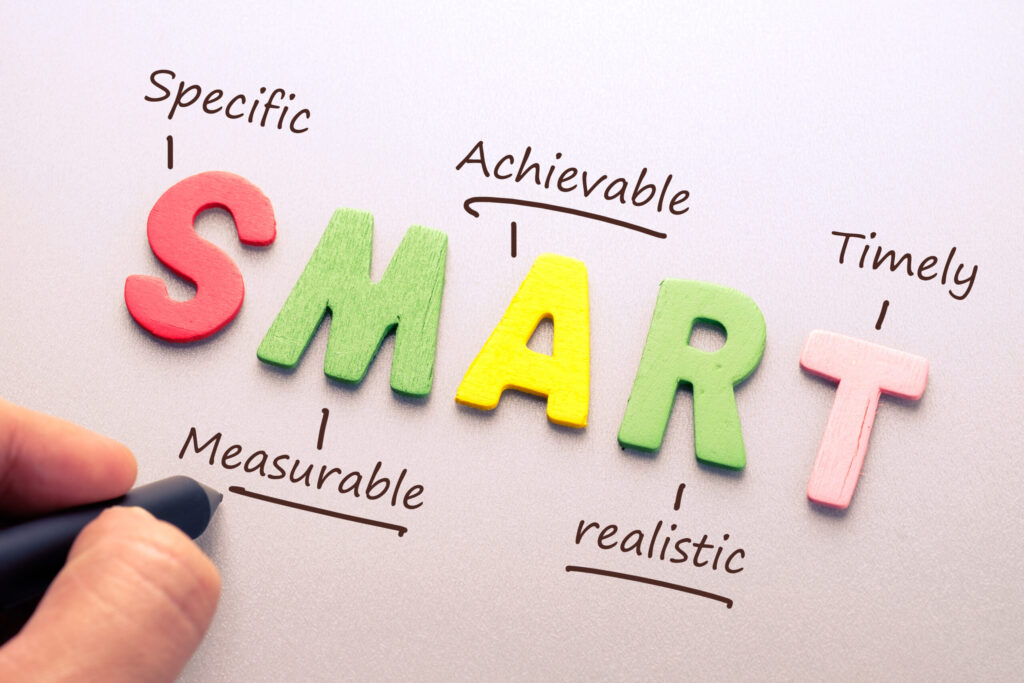Understanding Performance Appraisals: A Comprehensive Guide
A performance appraisal is a formal way for a manager to review an employee's work. Typically conducted annually, appraisals provide a chance to review goals, offer feedback, and discuss career development.

Appraisals or performance reviews, employee evaluations, and development discussions. The primary aim is to assess employee performance, motivate staff, and align individual goals with wider business objectives.
Types of performance appraisals
The four main types of appraisals:
360-degree feedback
This method gathers input from the employee’s co-workers, subordinates, supervisor and sometimes external stakeholders. It provides a comprehensive view of performance from multiple angles.
Self-appraisal
The employee completes a self-evaluation of their performance, highlighting achievements and areas for improvement. Managers often use peer appraisals in combination with their appraisals.
Manager appraisal
The employee’s direct supervisor assesses their performance against standards and long-term goals. This is the most traditional and commonly used approach.
Peer review
Colleagues assess each other’s performance. This can promote teamwork and reduce manager bias.
The performance appraisal process
The performance appraisal process typically involves the following steps:
1. Setting goals and objectives
Managers and employees should set clear goals before performance appraisals. These goals should be SMART (specific, measurable, achievable, relevant, and time-bound) and aligned with the company’s overall objectives.
2. Collecting performance data
To conduct a fair and accurate performance appraisal, managers should gather data from various sources, such as:
- Self-evaluation: Employees should self-evaluate and share their achievements and areas for improvement.
- Peer feedback: Colleagues who work closely with the employee can provide valuable insights into their performance and behaviour.
- Customer feedback: If applicable, customers can provide feedback on the employee’s performance and customer service skills.
- Manager’s observations: Managers should also consider their observations of an employee’s performance.
3. Conducting the appraisal meeting
The appraisal meeting is a crucial step in the performance appraisal process. Have the appraisal in private, ready to talk openly and honestly.
In the meeting, managers should give feedback, discuss improvements, and set goals for the year ahead. Managers should allow employees to ask questions and provide their input.
4. Documenting the appraisal
Managers should thoroughly document the performance appraisal meeting and its results for future reference. Future appraisals can use this record; if needed, it can also serve as evidence.
5. Follow-up and ongoing feedback
The performance appraisal process does not end with the appraisal meeting. Managers should provide ongoing feedback and support to help employees achieve their goals and improve their performance. Regular check-ins and progress reviews can also help employees stay on track and make any necessary adjustments.
Methods of performance appraisals
Here are appraisal methods to choose from, including:
- Rating scales – rank employees on factors like quality and quantity
- Management by objectives – set and measure goals
- Critical incidents – keep records of positive and negative performance
- Behaviourally anchored rating scales (BARS) – measure performance against specific behaviours
- 360-degree feedback – gather feedback from all angles
- Essay – managers describe employee’s performance in a written report
The right method depends on your organisational context. You can combine multiple methods for a comprehensive approach.
What are performance appraisals used for?
Appraisals serve important purposes including:
- Providing feedback to motivate and develop staff
- Identifying training needs
- Documenting criteria for promotions and rewards
- Clarifying expectations
- Enabling communication between managers and employees
- Evaluating personnel decisions
- Aligning individual objectives with organisational goals
In summary, appraisals are a strategic tool for managing people and progress.
Benefits of performance appraisals
When executed effectively, performance appraisals offer benefits for managers, employees, teams and the wider organisation:
Employees
- Receive formal feedback and recognition
- Understand strengths and weaknesses for improvement
- Increase engagement through involvement in the process
- Gain clarity on expectations
- Develop skills and capabilities
- Discuss career goals and progression
Managers
- Motivate employees by recognising achievements
- Coach employees through constructive criticism
- Identify training needs
- Document criteria for personnel decisions
- Set clear objectives aligned with organisational strategy
- Strengthen relationships with employees
Teams
- Identify professional development needs
- Improve working relationships
- Promote collaboration by cascading organisational goals
- Reduce conflicts through open communication
Organisation
- Improve employee performance and productivity
- Identify high potentials for advancement
- Assess training needs at the individual and organisational level
- Support strategic planning and talent management
- Promote fair and consistent treatment of employees
Criticism of performance appraisals
While performance reviews offer many benefits, they have drawn some criticism over the years:
- Opinion and bias – Reviewers can form opinions and unconscious biases that can influence their reviews rather than objective assessments.
- Time Time-consuming – The appraisal process consumed significant time and effort from both managers and employees.
- One-way process – Traditionally, appraisals have been top-down with little input from employees.
- Focus on negatives – There can be an emphasising too much on weaknesses rather than constructive feedback.
- Lack of follow-up – Reviewers sometimes fail to support the goals and development needs identified in the review.
- Detached from rewards – Appraisals may have little direct positive impact on pay rises and promotions.
- Stress and anxiety – Both managers and employees often experience stress during performance reviews.
A well-designed review process with ongoing feedback and employee involvement can address many of these limitations.
When should a performance appraisal take place?
The ideal appraisal schedule varies depending on the company and its employees. Many organisations conduct annual formal appraisals. However, regular informal reviews are also important:
- Annual performance review – This comprehensive yearly evaluation assesses achievements and areas for improvement. It feeds into promotion and reward decisions.
- Quarterly or biannual reviews – More frequent formal reviews allow managers to adjust goals and provide guidance at regular intervals.
- Regular informal reviews – Ongoing catch-ups, even as short as 15-30 minutes per month, provide timely feedback and coaching.
- Project or milestone reviews – Reviews at the end of major projects or work milestones assess performance on that job.
The optimal frequency depends on role requirements and organisational needs. A combination of formal yearly reviews and informal continuous feedback often works best.
Tips for conducting effective performance evaluations
To ensure a successful performance appraisal process, here are some tips to keep in mind:
1. Prepare in advance
Before the appraisal meeting, managers should review an employee’s work, set clear goals, and plan what to discuss.
2. Be specific and provide examples
When providing feedback, it is essential to be specific and provide examples to support your statements. This will help the employee understand their strengths and areas for improvement better.
3. Focus on behaviour, not personality
Focus on evaluating an employee’s actions and accomplishments over assessing their traits. By focusing on an employee’s work, the discussion can remain impartial and free from personal preconceptions.
4. Listen and encourage dialogue
The appraisal meeting should be a two-way conversation, with both the manager and employee actively participating. Managers should listen to the employee’s feedback and encourage them to ask questions and provide their input.
5. Set realistic goals
When setting goals for the upcoming year, it is essential to make them realistic and achievable. Unrealistic goals can demotivate employees and lead to poor performance.
6. Provide ongoing support and feedback
As mentioned earlier, the performance appraisal process does not end with the appraisal meeting. Managers should provide ongoing support and feedback to help employees achieve their goals and improve their performance.
Why do you need performance management software in employee performance reviews?
Many organisations silo important data across systems, hindering the extraction of meaningful insights. And the employee experience often suffers because of convoluted, opaque processes that lack transparency.
Implementing dedicated performance management software transforms the entire process. Automated workflows and reminders prompt reviewers to complete reviews consistently and on time.
Connecting different systems creates a single source of employee data for fairer, more accurate evaluations.
Employees enjoy a better experience with modern interfaces, self-assessments, ongoing feedback, and goal-tracking features. With talent analytics, organisations gain visibility into performance trends to inform better workforce decisions.
Do you want to improve your performance for 2024?

With a new year upon us, now is the perfect time to set clear performance goals and put plans in place to achieve them. Here are some tips to boost your performance in 2024:
Set SMART goals
Work with your manager to set Specific, Measurable, Achievable, Relevant and Time-bound goals. Break major goals down into smaller steps.
Identify development areas
Pinpoint skill sets or knowledge gaps holding you back and create a training plan to address them. This could involve on-the-job experience, courses, coaching or stretch assignments.
Seek feedback
Ask trusted colleagues for constructive feedback on your strengths and areas for improvement. Use this input to guide your goals.
Reflect on progress
Schedule time to regularly reflect on your goals. Reflect on what is contributing to your progress and what obstacles you need to address to maintain your momentum.
Communicate with your manager
Have open and regular check-ins with your manager to discuss progress, challenges and successes. Establish clear and consistent priorities for all involved.
With some proactive effort, you can make 2024 your most successful year yet at work. An effective performance appraisal process is crucial for providing the structure, feedback and support you need to thrive.
Reflect on your working style
Engage in introspection to gain a deeper understanding of your work habits and mindset. Are you operating most effectively? Identify any unhelpful patterns of behaviour you need to change.
Know your strengths
Understand your natural talents and strengths. Find opportunities to implement these principles more deeply into your work. For example, if you’re creative, could you use this skill to find innovative solutions?
Develop your skills
Look for opportunities to expand your capabilities. Take on projects to build new competencies. Seek training in areas you want to develop. Cultivate a commitment to ongoing learning and growth.
Care for your wellbeing
Emphasise your well-being by nurturing your physical and mental health. This will allow you to perform at your peak. Avoid compromising your well-being by neglecting exercise, nutrition, or work-life balance.
Collaborate with others
Build strong working relationships with colleagues. Collaboration can help you be more productive. Create a culture of continuous learning by actively sharing and seeking insights.
Stay positive and motivated
Keep motivated by focusing on achievements and having a positive mindset when facing challenges. Celebrate successes and maintain self-belief.
With focus and commitment, you can elevate your performance. An effective appraisal process will help you get the feedback and direction you need. Approach your manager for guidance on setting goals to help you thrive.
 HR Core
HR Core 









